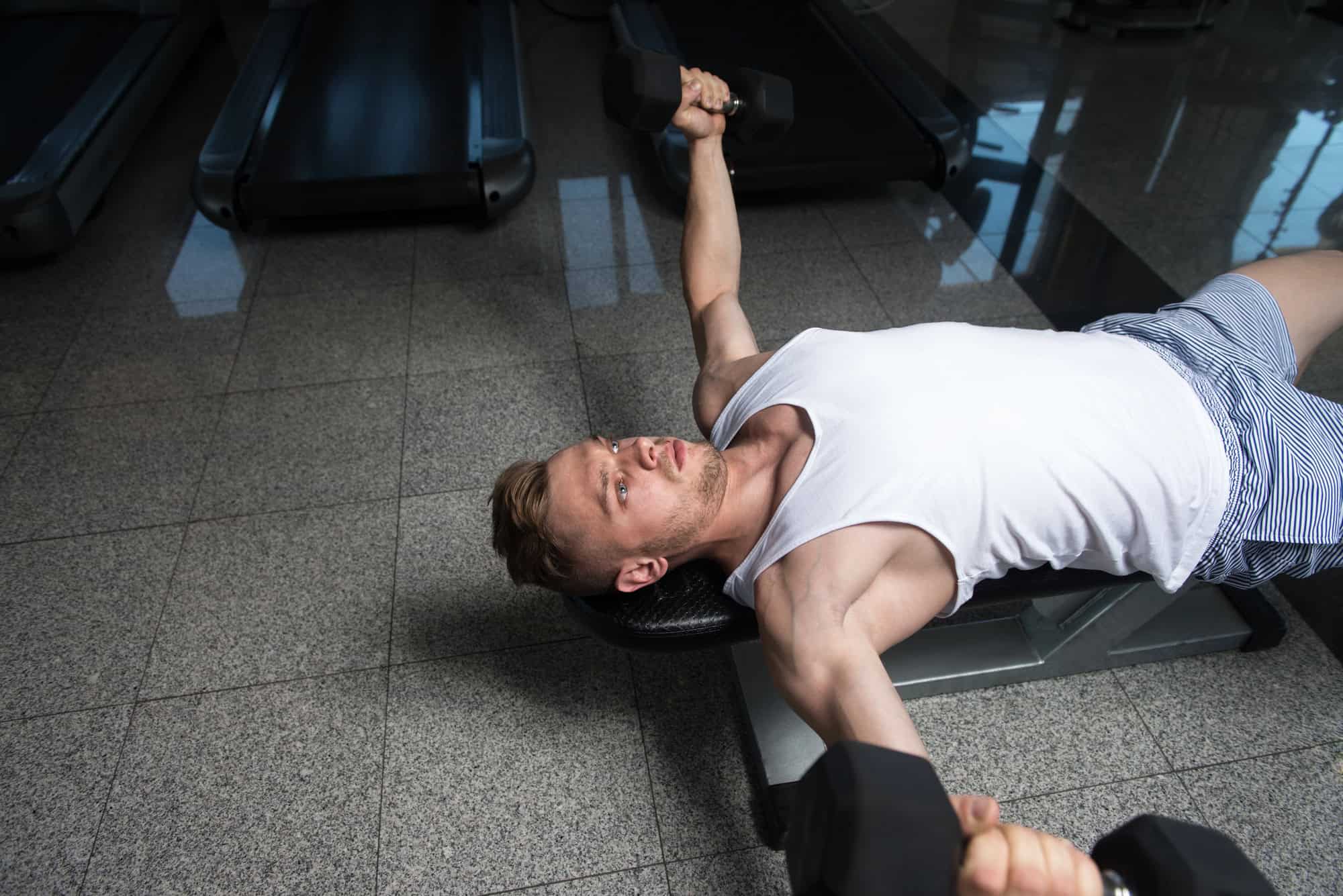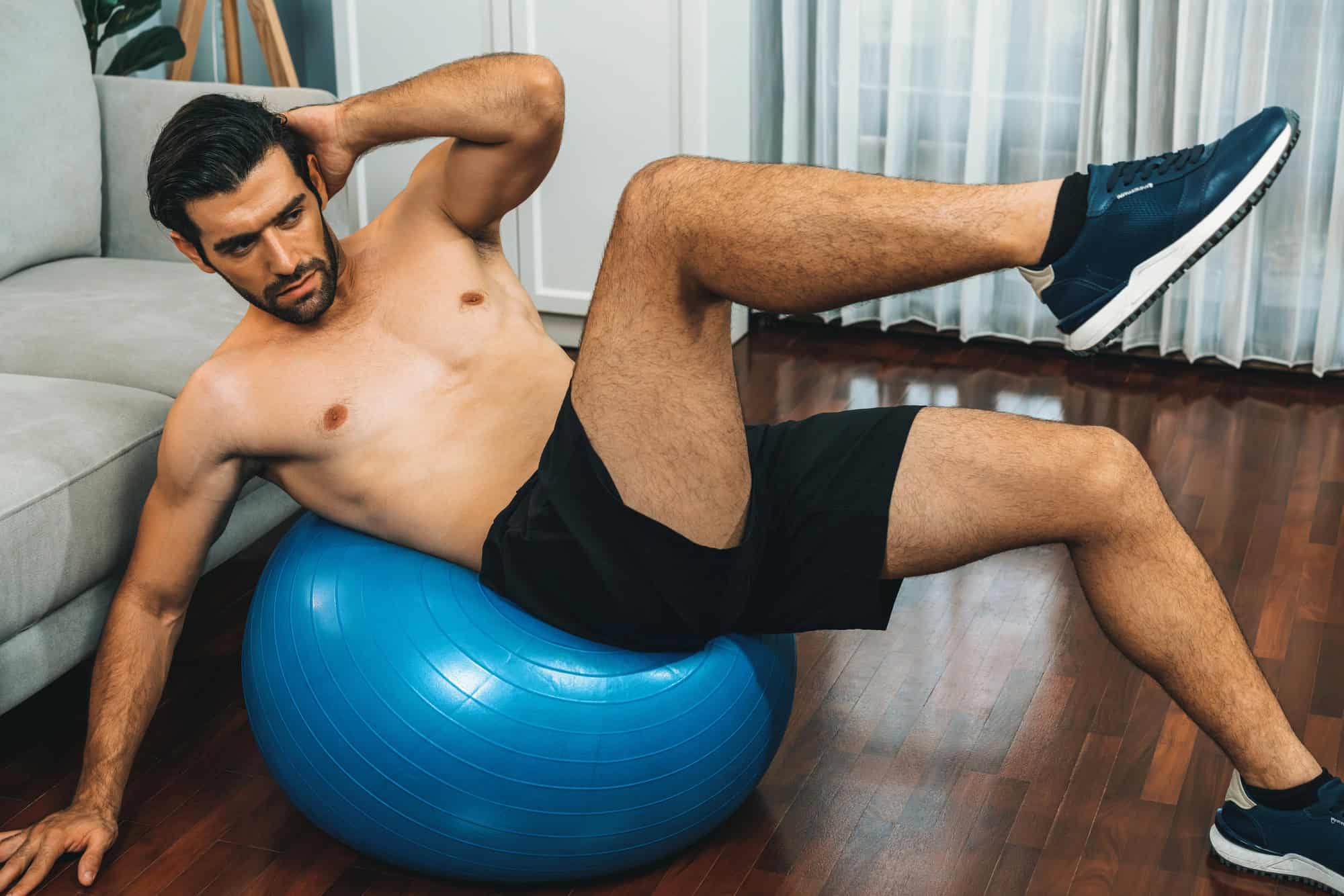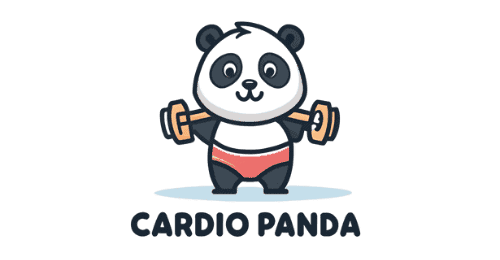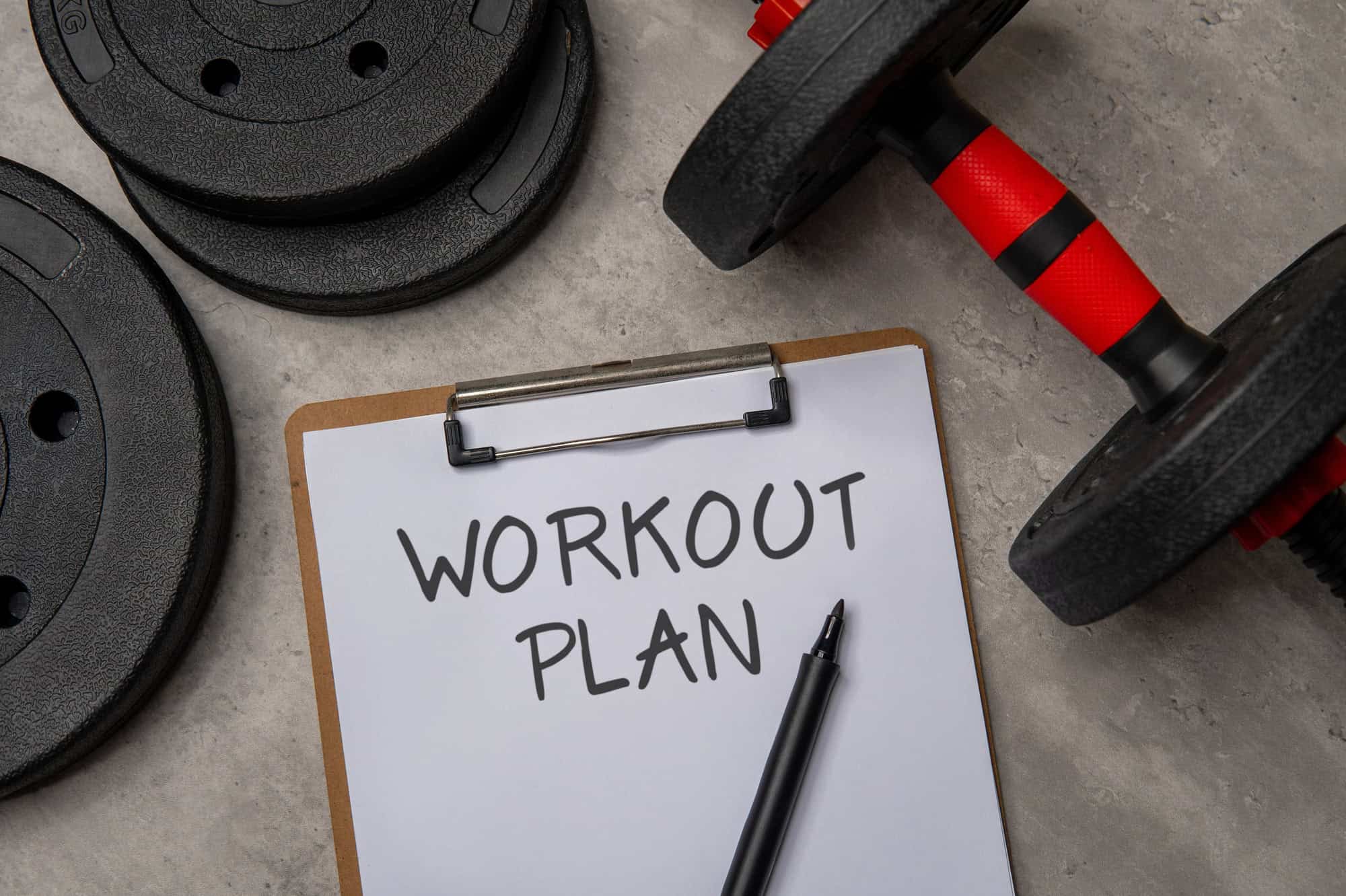Ever feel like you’re bouncing in and out of the gym without any real progress? You’re not alone. Finding a consistent, realistic 6-day gym workout schedule that actually works can feel like trying to herd cats – tricky and maybe a little chaotic. But a solid plan doesn’t have to be a prison sentence. In this guide, we’ll lay out a flexible 6-day gym routine that balances strength, fat loss, and overall fitness. Think of it as a friendly blueprint from someone who’s been juggling long workdays, weekends, and life, and still managed to hit the gym regularly – without burning out.
Real talk: six workouts a week might sound daunting at first (or even impossible with your busy schedule). The secret is not to go all-out every single day. Instead, this plan spreads volume across the week so each muscle group gets attention twice, which science shows is ideal for building muscle(1). Plus it hits the 150-minute-per-week aerobic goal and 2-days-of-strength guideline that health experts recommend(2). We’ll mix machines and free weights, quick cardio bursts, and built-in rest so you get stronger, leaner, and fitter without feeling crushed. Let’s dive in.
Why a 6-Day Gym Schedule?
A six-day schedule isn’t about living at the gym or having no life. It’s about consistency and balance. Studies show that hitting each muscle group twice a week produces better muscle gains than just once a week. In other words, splitting workouts across six days helps you build strength and muscle more effectively than cramming everything into just 3 or 4 days.
At the same time, the CDC and fitness guidelines say adults need 150 minutes of moderate exercise plus at least 2 days of strength training per week. With six days, you can meet those aerobic goals (walking, running, or cycling 30 min on most days) and train every major muscle group multiple times. This schedule covers your bases: aerobic health, strength, and mobility.
It’s also about flexibility. Let’s face it, life happens. A 6-day plan gives wiggle room — if one day goes off track, you can shuffle your routine without losing progress. Skipping one workout isn’t the end of the world; you simply adapt. The key is consistency over weeks and months, not perfection every single day. With a 6-day workout template, you’ll find a rhythm that’s ambitious yet doable.
Key Principles of a Flexible 6-Day Plan
Before we jump into the daily breakdown, let’s cover some guiding principles so this schedule really works for you:
- Hit each muscle group twice a week. As noted, training a muscle group two times weekly generally leads to better growth than only once. This doesn’t mean lifting heavy every session. On one day you might go heavier, and on the second session you could focus on higher reps or variations. The point is to stimulate each muscle frequently, allowing sufficient recovery in between.
- Balance strength and cardio. Combining weights with cardio gives you the best of both worlds. Strength training builds muscle (which boosts metabolism long-term), while cardio burns calories and improves heart health. For example, include a mix of weightlifting and short high-intensity interval training (HIIT) in your week. HIIT can burn up to 25–30% more calories than steady-state cardio in the same time(3), so even 10–15 minutes can pack a punch.
- Mix machines and free weights. Machines are great for beginners or when you need support/safety, and they can help isolate a muscle. Free weights (dumbbells, barbells) and bodyweight exercises, on the other hand, engage stabilizer muscles and functional strength. We’ll include both. If you have experience, lean into free weights for compound lifts (squats, presses, deadlifts). If you’re just starting or nursing a nagging shoulder, machines are a fine alternative.
- Adapt to your level and schedule. This plan is “semi-customizable.” If you’re a beginner, you might do 2–3 sets per exercise at moderate weight (or do fewer exercises) and still make great progress. An intermediate trainee can bump up to 3–4 sets, heavier weights, or add a finisher. If life gets busy, you can combine Day 5 & 6, or swap days around. What matters is staying consistent over weeks, not sweating one missed day.
- Warm-up and form. Begin each workout with 5–10 minutes of light cardio (like walking, cycling, or dynamic stretches) and some warm-up sets of your first exercise. Good form beats ego. It’s better to lift lighter or use a machine than to slam weights with bad form and injure yourself. Over time, you’ll get stronger — focus on gradual progress.
- Recovery (eat, sleep, stretch). Training six days a week means recovery is crucial. Aim for 7–9 hours of sleep, eat enough protein (around 20–30g per meal to support muscle repair), and stay hydrated. Consider adding a light stretching or mobility routine on your rest day to stay limber.
By keeping these principles in mind, this 6-day schedule should feel empowering, not punishing. It’s a plan, not a prison sentence. Let’s break it down day by day.
Your 6-Day Gym Workout Plan
Below is a sample workout week. Feel free to shuffle rest days or swap similar muscle groups if needed (for instance, if you absolutely must take a rest day on “Day 4,” just move the following days up, and continue the cycle). Each day includes both machine and free-weight options. Adjust sets/reps and weights for your level, aiming for good muscle engagement.
Quick Tip: Before each workout, do a 5–10 minute warm-up (brisk walking, light jogging, or cycling), and after finishing, cool down or stretch the muscles you worked. Safety first, gains second.
Day 1 – Upper Body (Push Focus: Chest, Shoulders, Triceps)

Start the week strong with your chest and shoulder workout. “Push” days train the muscles involved in pressing movements. Engage your core for stability and use machines or dumbbells if you’re new to these moves.
- Bench Press (Free weight) or Chest Press Machine: 3 sets of 8–12 reps. (Beginners can start with 2 sets; use a weight you can handle with good form.)
- Incline Dumbbell Press or Incline Chest Press Machine: 3 sets of 8–12 reps. (This hits upper chest.)
- Seated Overhead Press (Barbell or Dumbbells) or Shoulder Press Machine: 3 sets of 8–12 reps. (Keep your back flat against the bench.)
- Dumbbell Lateral Raise or Cable Lateral Raise: 3 sets of 10–15 reps. (Targets side shoulders; lighter weight works well here.)
- Triceps Dips (bench or machine) or Cable Triceps Pushdown: 3 sets of 10–12 reps. (Bend elbows fully; keep form strict.)
- Push-ups (bodyweight) or Chest Fly Machine: 2 sets of 12–15 reps for a burnout. (These can be done at the end for extra chest/tricep pump.)
Alternatives: If any gym machine isn’t available, swap in dumbbells or bodyweight moves (e.g. push-ups instead of machine press). If you’re really pressed for time, superset one chest move with one shoulder move (do one set of bench press, then immediately one set of overhead press, then rest). It saves time and keeps your heart rate up.
Day 2 – Lower Body (Legs & Glutes)
Leg day! Your quads, hamstrings, glutes, and calves all get worked. Don’t skip it — leg strength supports everything from posture to burning more calories at rest. You’ll feel it the next day, but that’s a good sign you did something right.
- Barbell Squats (or Goblet Squats with a dumbbell) or Leg Press Machine: 3 sets of 8–12 reps. (Squats and leg presses are foundational. Use a bench or wall for support if you’re a beginner.)
- Romanian Deadlift (Dumbbells or Barbell) or Seated/Standing Leg Curl Machine: 3 sets of 8–12 reps. (This targets hamstrings and glutes. Keep a slight bend in your knees.)
- Walking Lunges (Dumbbells) or Machine Lunges/Hack Squat: 3 sets of 10 reps per leg. (Good for glutes and quad balance. If you use a machine lunges, adjust weight to a manageable level.)
- Leg Extension Machine: 3 sets of 12–15 reps. (Isolation for quads. Focus on a slow, controlled movement.)
- Calf Raises (Standing or Seated machine): 3 sets of 12–15 reps. (Yes, calves burn. Try to go full range of motion.)
- Optional: If you have extra time/energy, add one set of Glute Bridge or Hip Thrust (bodyweight or barbell) for 12 reps to really fire up the glutes.
Beginners vs Intermediates: A beginner might do 2–3 sets and focus on mastering form (stick to bodyweight or machines if needed). An intermediate can challenge with heavier weights and full range of motion.
Day 3 – Upper Body (Pull Focus: Back, Biceps)
Time for a pull day. You’ll train the muscles that pull the weight: back, biceps, and rear shoulders. These exercises also help maintain good posture and balance out your push day.
- Pull-ups (Assisted if needed) or Lat Pulldown Machine: 3 sets of 6–10 reps. (The more you can do unassisted, the better, but assisted pull-ups or lat pulldowns work great for beginners.)
- Seated Row Machine or Bent-Over Barbell/Dumbbell Row: 3 sets of 8–12 reps. (Keep your back straight, squeeze shoulder blades together.)
- Dumbbell Reverse Fly or Pec Deck/Rear Delt Machine: 3 sets of 10–15 reps. (These hit the rear delts – great for shoulder health and posture.)
- Biceps Curl (Barbell or Dumbbell) or Cable Curl: 3 sets of 10–12 reps. (Control the weight; no swinging.)
- Hammer Curls (Dumbbells) or Rope Hammer Curl: 2–3 sets of 10–12 reps. (Good for forearms and biceps. Keeps elbows locked.)
- Hyperextensions (Back extensions) or Good Mornings (light barbell): 2 sets of 12 reps. (For lower back – optional but helpful for a strong posterior chain.)
Pro Tip: Think “squeeze” on pull movements: imagine pinching something between your shoulder blades on each pull. That mind-muscle connection maximizes effectiveness. If your gym has cables, feel free to swap in any rowing or pulldown variation for variety.
Day 4 – Lower Body (Quads & Hamstrings Emphasis)
We hit legs again, but with some variation so you’re not doing the exact same workout twice. Today, you can switch up order or choose different exercises to hit similar muscle groups from another angle. This keeps things fresh and well-rounded.
- Front Squats (Barbell or Dumbbells) or Smith Machine Squats: 3 sets of 8–12 reps. (Front squats target quads more; if not comfortable, stick with goblet squats.)
- Deadlifts (Conventional or Sumo) or Machine Deadlift/Hip Hinge: 3 sets of 6–10 reps. (Deadlifts are great for hamstrings and glutes. Start light – it’s all in form.)
- Bulgarian Split Squats (Dumbbell in each hand) or Leg Press (single leg): 3 sets of 8 reps per leg. (These work balance and unilaterally train legs.)
- Good Mornings (Barbell) or Back Extension Machine: 3 sets of 10–12 reps. (For hamstrings and lower back; keep movements controlled.)
- Standing or Seated Calf Raise: 3 sets of 12–15 reps. (You can combine with one from Day 2 if you missed reps.)
Adaptation: On a similar note, you could make today an “accessory day” focusing on core or technique. For instance, if legs are too sore, do lighter weights or do a gentler lower body day with more mobility work. Listen to your body, especially if you need more recovery.
Day 5 – Upper Body (Shoulders, Arms & Mixed Upper)
This day can be a catch-all for shoulders, arms, or any upper-body muscle you want to hit one more time. Since shoulders and arms assist on other days, it’s a good idea to give them a mini-focus now. You can also repeat a “push/pull” blend.
- Dumbbell Shoulder Press or Machine Shoulder Press: 3 sets of 8–12 reps. (Focus on form; don’t arch your back.)
- Lateral Raises Superset with Front Raises (Dumbbells): 2 supersets of 10 reps each (raise to side, then to front with same weights). (This fires all three heads of the deltoid.)
- Triceps Overhead Extension (Dumbbell or Cable) or Triceps Kickbacks: 3 sets of 10–12 reps. (Aim for full extension.)
- EZ Bar or Dumbbell Biceps Curl: 3 sets of 10–12 reps. (Slow on the way down for extra burn.)
- Cable Face Pulls or Reverse Pec Deck: 2–3 sets of 12–15 reps. (This works rear delts and upper back – great for posture if you sit a lot.)
- Optional: A push-up or dips burnout set: max reps in good form. (It’s fun to finish with a bodyweight challenge.)
Day 5 is also a chance to address any stubborn weak points or to add volume to a lagging muscle. If arms are already tired from earlier workouts, skip triceps/curls and hit shoulders/light back. If you feel energetic, you could do a quick 10-minute HIIT finisher on the treadmill or rower (30 sec sprint, 30 sec rest) to spike the intensity.
Day 6 – Core, Cardio & Active Recovery

Congratulations, you’ve made it to Day 6! This day is lighter in terms of weightlifting to round out your week. Focus on core work, mobility, and a bit of cardio to boost fat burning without overtaxing muscles.
- Plank Variations: 3 × 30–60 seconds (front plank, side planks). (Core stability is often overlooked – make it a staple.)
- Hanging Leg Raises or Captain’s Chair: 3 sets of 10–15 reps. (Targets lower abs; control the swing.)
- Bicycle Crunches or Ab Machine Crunch: 3 sets of 15–20 reps. (Feel your abs with each twist or crunch.)
- Light Cardio / HIIT Intervals: 15–20 minutes on treadmill, bike, or rowing machine. (Try 1 minute moderate, 30 seconds fast; or do a 10-minute HIIT like 20s sprint/40s rest times 10.)
- Hip Openers / Glute Bridges: 2 sets of 12–15 reps of bridges or bodyweight lunges. (This helps hips if you’ve been squatting all week.)
- Stretching or Foam Rolling: 5–10 minutes. (Focus on the areas that feel tight: IT bands, shoulders, hips.)
The goal here is to stay active while giving your main muscles a bit of a break. Think of it as “going for a long walk, but with intention.” If you’re sore, dial down the intensity – do brisk walking or a gentle cycle. If you feel great, maybe tack on an extra plank or a longer cardio session. The key is to flush out soreness and improve circulation so you can hit the next week fresh.
Note: You could also swap Day 6 with Day 7 if you prefer a mid-week active recovery and a rest day on Day 6. Just listen to your body’s cues.
Rest & Recovery (Day 7)
If you choose to train six consecutive days, take Day 7 off completely. No guilt. Your muscles grow in the rest period, not while you’re lifting. Use this day to do something relaxing and active: go for a casual walk or swim, take a yoga class, or simply chill with some light stretching. Stay hydrated and eat protein-rich foods to help muscle repair.
Tips for Beginners & Intermediates
- Beginners: Start on the lower end of sets (2–3 sets) and higher reps (12–15) until you lock in form. Machines and dumbbells are your friends at first. If a 6-day plan feels too intense, begin with a 4- or 5-day split (e.g. push/pull/legs, rest, repeat) and build up. Remember, consistency matters more than doing every single move.
- Intermediates: You can add a 4th set to major lifts or include more advanced variations (e.g. switch barbell squats to front squats, or regular pull-ups to weighted pull-ups). To save time, try supersets (e.g. bench press followed immediately by dumbbell rows) or circuits (move through 3–4 exercises back-to-back with minimal rest). Just make sure you’re still lifting heavy enough for strength gains.
- Swapping Exercises: Don’t like incline press? Use flat bench. No lat pulldown machine? Do bent-over rows. The core idea is grouping muscles. As long as you cover chest/shoulders/triceps on a push day, back/biceps on a pull day, and legs twice, you’ll hit all major areas.
- Time Crunch: If you only have 30 minutes, do 2 big lifts and a superset. A 30-minute workout with good intensity (like bench press + rows + quick abs) is better than skipping the gym.
- Nutrition & Hydration: Fuel up with a balanced meal 1–2 hours before training (protein + carbs + a little fat). After workouts, have a protein-rich snack to aid recovery. Keep a water bottle handy – even mild dehydration can sap your strength.
- Listen to Your Body: Some soreness after workouts is normal. Sharp pain or joint aches are not; if something hurts in a bad way, switch to machines or reduce range of motion. And if you’re mentally drained, take an extra rest day. This plan works best when it’s sustainable, not when it’s rigid and causing burnout.
Takeaways
- A 6-day gym schedule can work wonders when it’s realistic and balanced. Training each muscle group twice weekly generally leads to better strength and size gains(4), while also meeting health guidelines for cardio and strength(5).
- Mix free weights and machines for variety and safety. Free weights (squats, presses, rows) engage more muscles; machines (leg press, chest press, pull-down) help you isolate and are beginner-friendly.
- Combine strength and cardio: Lift weights to build lean muscle (which burns calories at rest) and do some cardio/HIIT to boost fat loss and cardiovascular health. They work best together(6).
- Stay flexible: Swap days, adjust volume, or combine workouts if life gets in the way. The goal is consistency, not perfection. Even if you only manage four solid workouts some weeks, it’s still progress over doing nothing.
- Rest matters: Sleep well, hydrate, and take your rest day seriously. Recovery lets muscles grow and prevents injury.
- Bookmark this plan: Keep this guide handy and tweak it as you improve. Track your workouts (weights, reps, how you feel) so you see progress over time.
By focusing on practical, achievable workouts and listening to your body, you’ll find that a 6-day routine isn’t a punishment – it’s a path to stronger legs, a bigger chest, a healthier heart, and a fitter you. Lace up those sneakers, embrace the routine, and celebrate the small wins each week. You’ve got this. Keep pushing, keep growing, and remember: each workout is one step closer to your goal. Good luck, and enjoy the journey!


 About the Author
About the Author
